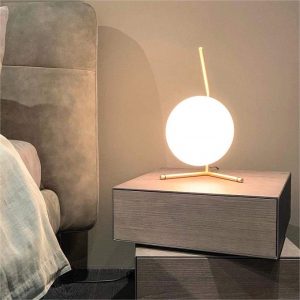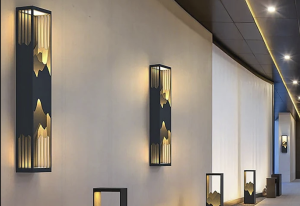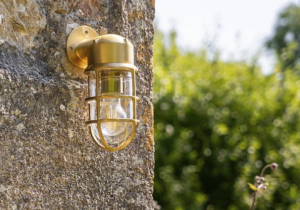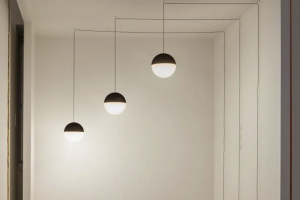Illuminate Your Space with Style: Discover the Charm of a Unique Ceiling Light
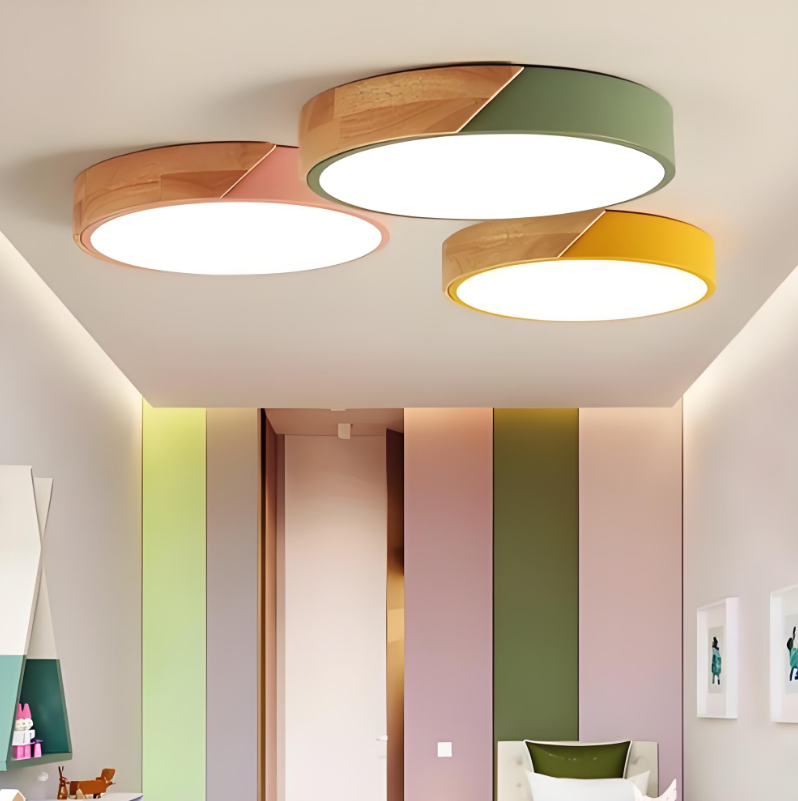
Ceiling lights play a crucial role in creating a well-lit and inviting space. They not only provide the necessary illumination for a room but also enhance the overall aesthetic. Whether you are designing a new home or renovating an existing space, choosing the right ceiling lights is essential to create the desired ambiance.
Ceiling lights serve as the primary source of light in a room, illuminating the entire space evenly. They can make a room feel larger and more open by drawing attention upwards and creating an illusion of height. Additionally, ceiling lights can highlight architectural features or focal points in a room, adding visual interest and depth.
The right ceiling lights can also set the mood and create a specific atmosphere in a space. For example, soft and warm lighting can create a cozy and intimate ambiance in a bedroom or living room, while bright and cool lighting can make a kitchen or workspace feel more energetic and productive. By carefully selecting the type, brightness, and placement of ceiling lights, you can transform any room into a welcoming and functional space.
Key Takeaways
- Ceiling lights are an important aspect of interior design
- Choosing the right ceiling light can enhance the overall look of your space
- There are various types of ceiling lights, including chandeliers and pendants
- The latest trends in ceiling light design include minimalist and industrial styles
- Materials and finishes play a crucial role in the overall aesthetic of your ceiling light
Choosing the Right Ceiling Light for Your Space
When selecting a ceiling light yeebu for your space, there are several factors to consider. First, you need to take into account the size of the room. A small room may require a single ceiling light fixture, while larger rooms may benefit from multiple fixtures or additional lighting sources such as floor lamps or wall sconces.
Ceiling height is another important consideration. Low ceilings may require flush mount or semi-flush mount fixtures to avoid creating a cramped feeling. On the other hand, high ceilings provide an opportunity to incorporate statement pieces such as chandeliers or pendant lights that can add drama and elegance to a space.
Brightness level is also crucial when choosing a ceiling light. The appropriate brightness will depend on the function of the room. For example, task-oriented spaces like kitchens or home offices may require brighter lighting, while bedrooms or living rooms may benefit from softer and more ambient lighting. It is important to strike a balance between functionality and aesthetics to create a well-lit and visually appealing space.
Types of Ceiling Lights: From Chandeliers to Pendants and Beyond
There are various types of ceiling lights available, each with its own unique characteristics and advantages. Chandeliers are a popular choice for adding elegance and sophistication to a space. They come in a wide range of styles, from traditional crystal chandeliers to modern and minimalist designs. Chandeliers are often used in dining rooms, entryways, or living rooms as statement pieces that can instantly elevate the overall décor.
Pendant lights are another versatile option for ceiling lighting. They are suspended from the ceiling by a cord or chain and can be used individually or in clusters to create a dramatic effect. Pendant lights are commonly used in kitchens, dining areas, or as bedside lighting in bedrooms. They come in various shapes, sizes, and materials, allowing you to find the perfect pendant light to complement your space.
Flush mount and semi-flush mount fixtures are ideal for rooms with low ceilings. They sit close to the ceiling and provide a sleek and streamlined look. These types of fixtures are often used in hallways, bedrooms, or bathrooms where space is limited. Flush mount fixtures are available in a wide range of styles, from traditional to contemporary, making it easy to find one that suits your personal taste.
The Latest Trends in Ceiling Light Design
| Trend | Description | Advantages |
|---|---|---|
| Minimalism | Simple and sleek designs with clean lines and neutral colors. | Creates a modern and uncluttered look, fits well with any interior design style. |
| Geometric Shapes | Light fixtures with geometric shapes and patterns. | Adds visual interest and dimension to a room, creates a unique focal point. |
| Natural Materials | Light fixtures made from natural materials such as wood, bamboo, or rattan. | Brings warmth and texture to a room, eco-friendly and sustainable. |
| LED Technology | Light fixtures that use LED technology for energy efficiency and long-lasting performance. | Reduces energy costs and carbon footprint, low maintenance and easy to install. |
| Smart Lighting | Light fixtures that can be controlled through a smartphone app or voice commands. | Convenient and customizable, can be programmed to fit different moods and activities. |
Ceiling light design is constantly evolving, with new trends emerging each year. Currently, minimalist and industrial styles are particularly popular. Minimalist ceiling lights feature clean lines and simple designs, often with neutral colors or metallic finishes. These lights blend seamlessly into any décor style and create a sleek and uncluttered look.
Industrial-style ceiling lights draw inspiration from factories and warehouses, featuring exposed bulbs, metal accents, and raw materials such as iron or brass. These lights add a touch of ruggedness and character to a space, making them a popular choice for modern and urban interiors.
To incorporate these trends into your own space, consider choosing ceiling lights with clean and simple designs, such as flush mount fixtures with geometric shapes or pendant lights with exposed bulbs. Opt for neutral colors or metallic finishes to create a minimalist look, or choose fixtures with industrial-inspired details like wire cages or distressed finishes.
Materials and Finishes: Exploring Your Options
Ceiling lights are available in a wide range of materials and finishes, allowing you to find the perfect match for your space. Common materials used for ceiling lights include metal, glass, crystal, and fabric. Each material has its own unique characteristics and can create a different look and feel in a room.
Metal ceiling lights are durable and versatile, making them a popular choice for various décor styles. They come in different finishes such as brushed nickel, bronze, or brass, allowing you to find the perfect match for your space. Metal fixtures can add a touch of sophistication and elegance to a room or create an industrial-inspired look.
Glass ceiling lights are often used to create a soft and diffused lighting effect. They come in various styles, from clear glass to frosted or colored glass. Glass fixtures can add a touch of elegance and glamour to a space, making them a popular choice for dining rooms or entryways.
Crystal ceiling lights are known for their luxurious and sparkling appearance. They are often used as statement pieces in formal spaces such as dining rooms or grand entryways. Crystal fixtures can create a dramatic effect by reflecting light and creating beautiful patterns on the walls and ceiling.
Fabric ceiling lights are ideal for creating a soft and warm lighting effect. They come in various shapes and sizes, from drum shades to chandelier-style fixtures. Fabric fixtures can add a touch of elegance and sophistication to a room, making them a popular choice for bedrooms or living rooms.
When choosing the right material and finish for your space, consider the overall style and décor of the room. Opt for materials and finishes that complement the existing elements in the space and create a cohesive look. For example, if you have a modern and minimalist décor, choose metal fixtures with clean lines and neutral finishes. If you have a traditional or vintage-inspired décor, consider crystal or fabric fixtures with ornate details.
Installing Your Ceiling Light: Tips and Tricks

Installing a ceiling light may seem like a daunting task, but with the right tools and instructions, it can be a straightforward process. Here is a step-by-step guide to help you install your ceiling light safely and successfully:
1. Turn off the power: Before starting any electrical work, make sure to turn off the power to the circuit you will be working on. Locate the circuit breaker or fuse box and switch off the corresponding breaker or remove the fuse.
2. Remove the old fixture: If you are replacing an existing ceiling light, start by removing the old fixture. Turn off the light switch and use a screwdriver to remove any screws or mounting hardware holding the fixture in place. Carefully disconnect the wires from the old fixture.
3. Prepare the new fixture: Before installing the new ceiling light, make sure to read the manufacturer’s instructions carefully. Assemble any parts or components that need to be put together before installation.
4. Connect the wires: Start by connecting the ground wire from the ceiling to the ground wire on the new fixture. Use a wire nut to secure the connection. Next, connect the white wire from the ceiling to the white wire on the new fixture, again using a wire nut. Finally, connect the black wire from the ceiling to the black wire on the new fixture.
5. Mount the new fixture: Once all the wires are connected, carefully tuck them into the electrical box in the ceiling. Secure the new fixture to the ceiling using the provided screws or mounting hardware. Make sure the fixture is level and secure.
6. Install the light bulbs: If your new fixture requires light bulbs, install them according to the manufacturer’s instructions. Make sure to use the appropriate wattage and type of bulbs recommended for your fixture.
7. Turn on the power: Once the new fixture is securely installed, turn on the power to the circuit at the breaker or fuse box. Test the light switch to make sure the new fixture is working properly.
It is important to note that if you are not comfortable or experienced with electrical work, it is best to hire a professional electrician to install your ceiling light. They have the knowledge and expertise to ensure a safe and successful installation.
How to Clean and Maintain Your Ceiling Light
Proper cleaning and maintenance are essential to ensure your ceiling light lasts for years to come. Here are some tips to help you keep your ceiling light looking its best:
1. Turn off the power: Before cleaning your ceiling light, make sure to turn off the power at the breaker or fuse box. This will prevent any accidents or electrical shocks.
2. Remove dust and debris: Start by removing any dust or debris from the surface of the fixture. Use a soft cloth or duster to gently wipe away any dirt or dust. Avoid using abrasive materials or harsh chemicals that can damage the finish.
3. Clean glass or crystal fixtures: If your ceiling light has glass or crystal components, use a glass cleaner or a mixture of water and mild dish soap to clean them. Spray the cleaner onto a soft cloth and gently wipe the glass or crystal surfaces. Avoid spraying directly onto the fixture as it can damage electrical components.
4. Clean metal fixtures: For metal fixtures, use a soft cloth dampened with water and mild dish soap to clean the surface. Gently wipe away any dirt or grime, making sure to dry the fixture thoroughly to prevent water spots or damage.
5. Replace light bulbs: Regularly check and replace light bulbs as needed. Over time, bulbs can become dim or burn out, affecting the overall brightness and appearance of your ceiling light.
6. Inspect and tighten connections: Periodically inspect the connections between the fixture and the ceiling to ensure they are secure. If any screws or mounting hardware have become loose, tighten them carefully.
7. Schedule professional maintenance: It is recommended to schedule professional maintenance for your ceiling light every few years. A professional electrician can inspect the fixture, clean any hard-to-reach areas, and ensure that all electrical components are in good working condition.
It is important to avoid common mistakes when cleaning your ceiling light. Avoid using abrasive materials or harsh chemicals that can damage the finish or electrical components. Make sure to turn off the power before cleaning to prevent any accidents or electrical shocks. If you are unsure about how to clean your specific ceiling light, consult the manufacturer’s instructions or contact a professional for guidance.
Enhancing Your Décor with Ceiling Light Accessories
Ceiling light accessories can add an extra touch of style and functionality to your space. From shades and diffusers to dimmer switches and remote controls, there are various accessories available to enhance the overall aesthetic of your ceiling lights.
Shades are a popular accessory for ceiling lights as they can soften the light and create a warm and inviting ambiance. They come in various shapes, sizes, and materials, allowing you to customize the look of your fixture. For example, a fabric shade can add a touch of elegance and sophistication, while a metal shade can create a more industrial or modern look.
Diffusers are another accessory that can be added to ceiling lights to create a softer and more diffused lighting effect. They are often used with pendant lights or chandeliers to reduce glare and create a more comfortable and inviting atmosphere. Diffusers are available in various materials such as glass or acrylic and can be easily attached to the bottom of the fixture.
Dimmer switches are a popular accessory for ceiling lights as they allow you to adjust the brightness level according to your needs and preferences. They can create a more versatile lighting scheme, allowing you to create different moods and atmospheres in a space. Dimmer switches are available in various styles and can be easily installed by a professional electrician.
Remote controls are another convenient accessory for ceiling lights, especially for fixtures that are hard to reach or in rooms with multiple lighting sources. They allow you to control the brightness level or turn the lights on and off from anywhere in the room. Remote controls are available in various styles and can be easily synced with your existing ceiling lights.
When choosing accessories for your ceiling lights, consider the overall style and décor of your space. Opt for accessories that complement the existing elements in the room and create a cohesive look. For example, if you have a traditional or vintage-inspired décor, choose shades or diffusers with ornate details or patterns. If you have a modern or minimalist décor, opt for sleek and simple accessories that blend seamlessly into the space.
Lighting Up Your Life: The Benefits of a Well-Lit Home
Proper lighting is essential in creating a comfortable and inviting home. A well-lit space not only enhances the overall aesthetic but also has several benefits for your mood and well-being.
Firstly, proper lighting can improve visibility and functionality in a space. It allows you to perform tasks more efficiently and reduces eye strain. For example, bright and focused lighting in a kitchen or workspace can make it easier to prepare meals or complete work tasks. On the other hand, soft and ambient lighting in a bedroom or living room can create a relaxing and cozy atmosphere.
Secondly, lighting can affect your mood and emotions. Bright and cool lighting can make you feel more alert and energized, while soft and warm lighting can create a calming and soothing effect. By choosing the right lighting for each room, you can create the desired ambiance and enhance your overall well-being.
Thirdly, lighting can highlight architectural features or focal points in a room, adding visual interest and depth. For example, a well-placed ceiling light can draw attention to a beautiful chandelier or a piece of artwork. By using lighting strategically, you can create a focal point or highlight specific elements in your space.
Lastly, proper lighting can make a room feel larger and more open. By illuminating the entire space evenly, ceiling lights can create an illusion of height and draw attention upwards. This is particularly beneficial for rooms with low ceilings or small dimensions, as it can make them feel more spacious and airy.
Elevate Your Space with a Unique Ceiling Light
Ceiling lights play a crucial role in interior design, providing the necessary illumination for a space while enhancing the overall aesthetic. By choosing the right ceiling light for your space, considering factors such as room size, ceiling height, and brightness level, you can create a well-lit and visually appealing environment.
There are various types of ceiling lights available, from chandeliers to pendants and beyond, each with its own unique characteristics and advantages. By staying up to date with the latest trends in ceiling light design and exploring different materials and finishes, you can find the perfect match for your home decor and personal style. Chandeliers, with their elegant and intricate designs, add a touch of sophistication and glamour to any space. They are often the centerpiece of a room and can create a stunning visual impact. Pendants, on the other hand, offer a more modern and minimalist look. They come in a variety of shapes and sizes, making them versatile for different spaces. Pendant lights are great for providing focused lighting in specific areas, such as over a dining table or kitchen island. Additionally, there are flush mount and semi-flush mount ceiling lights that are perfect for rooms with low ceilings or for those who prefer a more subtle lighting option. These types of lights provide a sleek and streamlined look while still illuminating the space effectively. Ultimately, the choice of ceiling light depends on your personal preferences, the style of your home, and the functionality you require.

